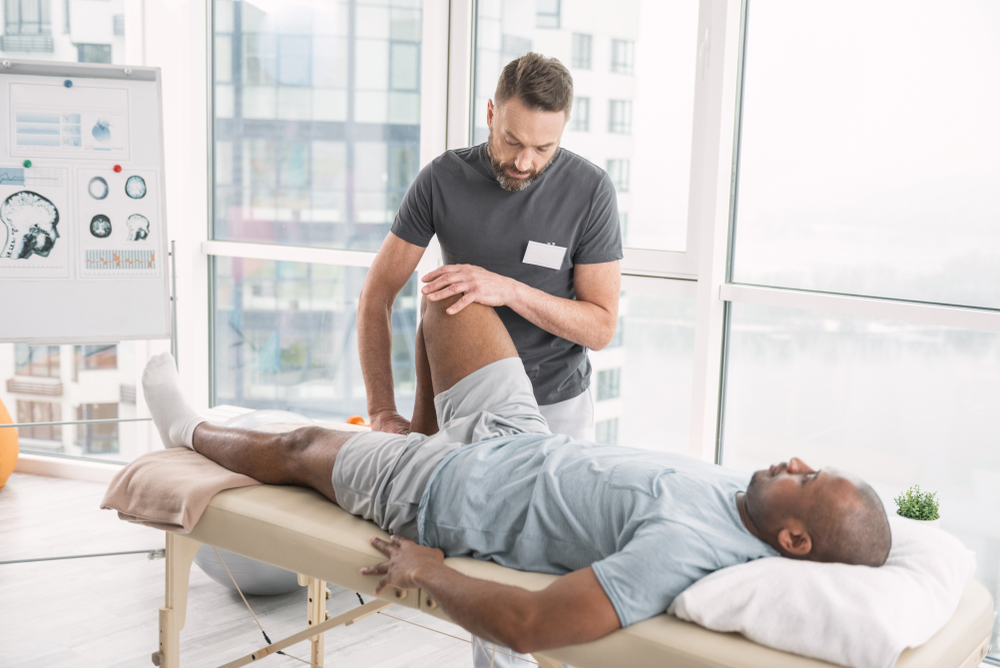Pain medication is only meant as a temporary solution for orthopedic pain. For successful long-term relief, physical therapy can help.
Orthopedic pain can be intense, chronic, and debilitating. That’s why in many cases, the first line of treatment is a pain medication prescribed to help you participate in your normal daily activities. Yet opioid pain medication is meant as only a short-term solution for pain after an injury or surgery. For more sustained relief, you’ll likely need physical therapy.
A 2018 study co-sponsored by Stanford University School of Medicine and Duke University School of Medicine revealed patients who underwent physical therapy soon after experiencing musculoskeletal pain in the shoulder, neck, low back, or knee were 7 to 16 percent less likely to use pain medication. Patients who started a regimen of pain medication reduced the number of pain medications they took by 5 to 10 percent after they participated in a physical therapy program early on in their treatment.
Physical therapy provides many benefits, but perhaps one of the most important and underappreciated could be how it can reduce the need for opioids.
How Physical Therapy Reduces Pain
When you hit your calf or scrape your knee, your brain receives the message and sends out its own natural chemicals to block the pain. That’s usually enough to reduce pain from a minor injury. However, severe trauma or chronic pain overwhelms the pain receptors in the brain. So you may need the extra boost from medication to overcome the pain and let your body heal.
For long-term pain management, however, physical therapy works on several levels to get you moving freely again. Here are some of the ways physical therapy is a great alternative to pain medication.
Strengthens Muscles
Physical therapy strengthens the muscles, tendons, and ligaments damaged by injury, ultimately helping to reduce pain. This is accomplished by guided exercises, stretches, deep tissue massage, microcurrent stimulation, and cold and heat therapy, among other treatments. Each method attacks the pain in different ways by increasing the body’s natural pain-fighters. For example, deep tissue massage pushes oxygen and nutrients to the painful area, while microcurrent stimulation boosts dopamine and serotonin levels to battle pain.
Enhances Mobility
The goal of physical therapy is to help you accomplish your everyday tasks with little to no pain. Pain medication may be helpful to manage pain as you complete your PT program, but should only be used as a short-term solution. As you build up your muscles, you should be able to move more easily and rely less and less on your pain medication.
Reduces Stress
Dealing with chronic pain can be physically debilitating and stressful. Therefore, people with chronic pain often experience high levels of stress, anxiety, depression, and isolation.
In addition to strengthening and mobility-enhancing exercises, your physical therapist can teach you stress-reduction techniques such as mindful movement. Working with a physical therapist can also help you feel less isolated because you have a partner to help you manage your pain.
Don’t Live With Pain
Your physical therapist will craft a personalized program using the most suitable methods to get you back on track and living without pain. As you get stronger over time, you can expect to rely less and less on pain medication.
Don’t let chronic pain lessen your quality of life. The orthopedists and physical therapists at New York Bone & Joint Specialists and All Sports Physical Therapy will employ the latest technology to diagnose and treat your condition. We offer a full spectrum of services including pain management, physical therapy, and surgery, if appropriate. Contact us today for a consultation.




